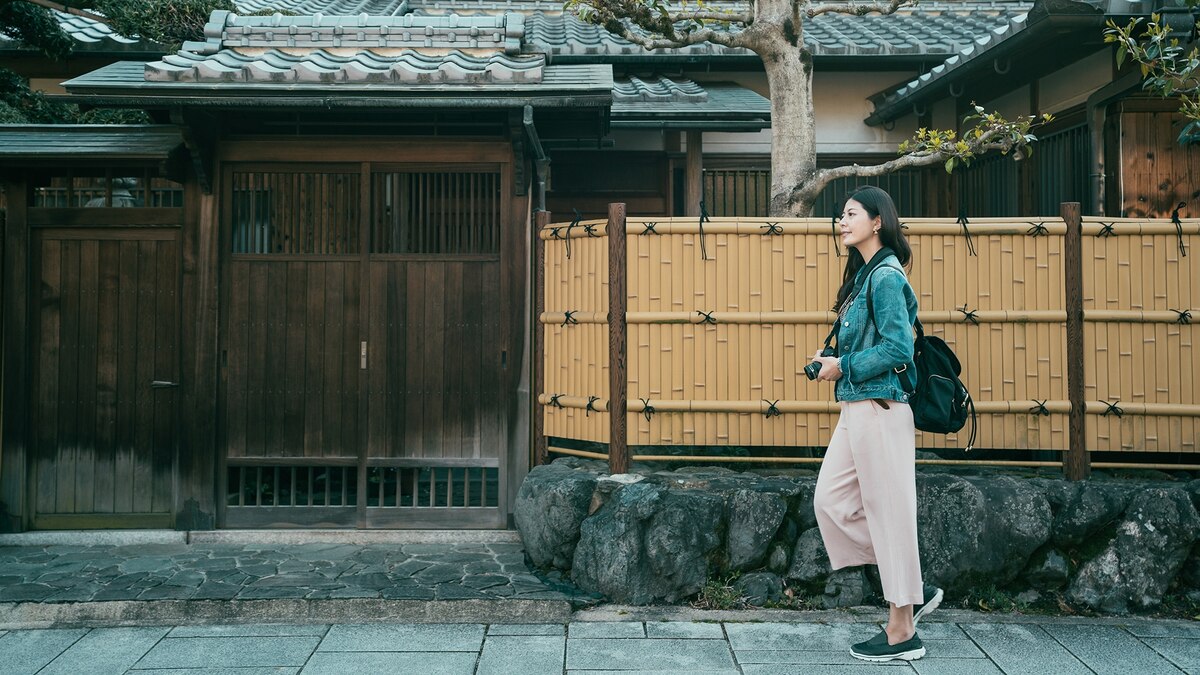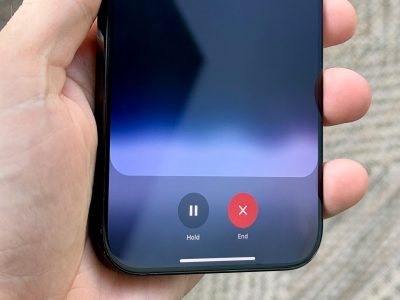By clicking on the featured links, visitors will leave nationalgeographic.com and be directed to third-party e-commerce sites that operate under different terms and privacy policies. As a participant in multiple affiliate marketing programs, National Geographic will earn a commission for certain purchases. See full disclaimer below.*
A versatile camera is important, but it’s only the start of a travel photography kit. Investing in the best camera gear—from tripods to backpacks—is essential for capturing great content on trips.
That’s something Los Angeles, California-based professional travel photographer Tiffany Nguyen knows well. The Sony Alpha Imaging Collective member trots the globe to photograph the world’s wonders, from the northern lights in Alaska to marine life in the South Pacific. She needs a strategic arsenal of photography equipment to capture this variety of content, but that doesn’t mean she brings every item on every trip.
“I prioritize owning lightweight gear and only carrying the camera, lenses, and accessories I’ll need for a specific location,” she says. She also highly recommends photographers invest in services like TSA Precheck to expedite transit.
As a travel journalist and photographer myself, I’ve also honed a portable camera kit that helps me produce publication-worthy images in far-flung corners of the globe. With advice from Nguyen and other pro travelers, I’ve compiled this expert camera gear list for any traveler interested in improving their photography. Be sure to read on for packing and travel tips too.
Our picks for the best camera gear for travel
The best camera gear for travel and adventure
Most creatives specialize in a few subjects or niches, but travel photographers have to be ready for whatever a destination throws at them. That’s where this collection of the best travel camera gear comes into play. The following 12 items are the perfect base to any kit. You can build and expand your collection as your skills grow.
Nat Geo’s in-house photo engineering team named the Fujifilm X-T50 the best compact camera for travel for its top-notch film simulations and crisp visuals. They also extolled the straight-from-the-camera JPG images that barely require editing.
The travel-friendly camera may weigh just under a pound, but it captures professional-level 40.2-megapixel images that are detail-rich enough to frame as a centerpiece at home.
The GoPro Hero 13 Black camera is a must-have for adventure travel photographers and filmmakers. It captures 5K video at 60p or 4K at 120p—perfect for slowing down footage without losing quality. It also lets you capture 24.7-megapixel stills from each video, which means you don’t have to decide between filming or photographing the action.
This latest iteration of GoPro’s Hero line also comes with the long-awaited new battery, which can last for up to two-and-a-half hours of continuous capturing. With a rugged and durable design, this compact camera is perfect for adventure creators. It’s also waterproof down to 33 feet, according to the brand.
(Nat Geo photo engineers say these are the best cameras for travelers)
Whether you’re capturing the northern lights or recording an interview, you need a travel tripod to keep your camera steady. However, travel tripods can significantly weigh down your suitcase. Chicago-based travel journalist, photographer, and podcast host Yulia Denisyuk recommends Peak Design’s travel tripod. “It’s sturdy, lightweight, and packs well,” she says.
The carbon fiber model weighs just under three pounds, but can hold up to 20 pounds of gear—including a full-frame DSLR camera with a telephoto lens. The tripod also folds down to the size of a water bottle, which means you can even stuff it into a backpack side pocket to maximize suitcase space.
For many creatives, today’s smartphones double as a backup—or even main—camera, with high-quality recording and RAW photography functionality. Los Angeles, California-based travel journalist Chris Dong regularly records and shares his travel experiences using his iPhone and the UBeesize Flexible Mini Phone Tripod.
He keeps his kit light, and swears by this half-pound, remote-controlled tripod, which works with smartphones, action cameras, and webcams up to 3.7 inches wide. He said he uses the device to log footage of himself during key travel experiences, particularly dining.
(For the best travel photos and videos, invest in a sturdy tripod)
When I learned that adventure photography icons like Chris Burkard use Shimoda backpacks, I knew I had to try one. I was not disappointed, especially with the Shimoda Explore v2 30. This is not just a travel camera backpack; it’s part photography, part action.
It has a main compartment for cameras and lenses, accessible via a side zipper, as well as a roomy top pocket for toiletries and spare gear, a laptop and iPad sleeve, collapsible side pockets for water bottles or tripods, and a sturdy and removable waistband for lengthy hikes.
As long as it’s not overstuffed, the 30-liter size works well as a carry-on. It can also fit under the seat in front of you, depending on the airplane.
(Pro photographers swear by these camera bags)
Travel and adventure photographers face all sorts of conditions. Dry bags can help you prepare for the elements. When fastened properly, most dry bags will do the trick, but I swear by the Sea to Summit Evac Compression Dry Bags because they double as compression bags. I use them to squeeze down bulky items like a coat or snow pants when I’m packing. Then, when I reach my destination, I use them as dry bags to protect my camera gear in the field.
All sorts of dust and debris can cling to your camera while traveling. A lightweight rocket air blaster, like this one from Giottos, deserves space in your travel backpack. I use this small air blaster to clear the sensor whenever I’m changing lenses on my mirrorless cameras (getting any dust on the sensor can introduce spots on images). I also use it to clean up the lenses.
I’ve tried different iterations of this type of cleaner, but I find this long-bulb “rocket” has more power for stubborn debris. I also like the smooth exterior because sand and dust won’t stick to it.
Astrophotographer Bettymaya Foott spends much of her time photographing at night, and she swears by her Petzl Headlamp. “I used to have the worst headlamp for years,” she says. Then she invested in a Petzl Headlamp and “it changed my life,” she says.
Some of the features that Foott loves about Petzl headlamps include the red-light capabilities, which preserve night vision; the long battery life (it comes with three standard batteries); and the comfortable strap. Additionally, the Tikka is compact, has 350 lumens at its brightest, and alternates between settings with one single button.
(Snap away with these compact, easy-to-use cameras)
Capturing compelling images is the first step in travel photography. Next comes editing. For that, Nguyen is a big fan of the Adobe Lightroom app. It’s the mobile version of the desktop editing software, Lightroom, which is the go-to tool for many esteemed photographers.
In the app, photographers can adjust settings like contrast, saturation, vibrancy, highlights, and shadows. You can also add filters (including those recommended by Lightroom), remove unwanted objects, or minimize noise. With a Lightroom subscription ($11.99 per month), which includes desktop, mobile, and web access, photographers can edit RAW photos in the app as well, which is perfect for on-the-go post-production.
Adventure photographers juggle a ton of gear in the field. A camera clip, like this one, can alleviate some of the burden. Made to hold over 200 pounds, this clip locks your camera to a backpack strap or belt for quick access. Press a button to release it from the clip, snap a photo, then clip it back in place—rinse, repeat. It’s great for hikers and bikers who want speedy camera access without having to deal with a camera strap or packing up the camera after each shot.
Keeping lenses clean while photographing nature can be trying. To minimize the mess, nomadic adventure photographer Jay Clue recommends the EVO Antistatic Circular Polarizer from Hoya. “It keeps stuff from sticking [to the lens],” he says. “It’s easy to clean and can take the beating I put my gear through.”
He also likes the water-repelling features. “Water just beads off of it when I’m working on boats or near waterfalls,” he says. Additionally, the filter doesn’t alter color and it comes in over 15 sizes that fit most lens models.
Tips for buying camera gear for travel
Go lightweight
One of the toughest things about taking photos while traveling is navigating different airline weight restrictions. That’s why Nguyen opts for the lightest gear possible—and not just the most portable camera, but also light tripods, backpacks, and carrying cases.
Keep a low profile
Photography gear is expensive, and traveling with it does come with risks. “Always be aware of your surroundings and never leave your camera bag unattended,” says Nguyen, even if a coffee shop or lounge feels safe. Additionally, look for bags and packs that aren’t obviously for cameras. That’s one of my favorite things about the Shimoda bag. While it is, in fact, a highly functional camera bag, it has the look and feel of a traditional travel backpack.
Consider renting, then buying
If you’re unsure whether to invest in a specific piece of gear, consider renting from a website like LensRentals.com, then buying it. I rent most lenses for a trip before investing in a new one. For only a couple hundred dollars, I can see whether or not it fits my needs. This is much more affordable than purchasing a $1,500 lens and then realizing I don’t like it. You can do the same for audio gear, tripods, and more.
Look for weather-proofing options
As Clue knows from his marine and adventure photography work, travel can put your gear through the wringer. That’s why it’s always smart to research how weatherproof your gear is. If it’s not all that durable, look for gear designed for additional protection, like dry bags and polarizers.
Get insurance
The cost of travel photography gear, from cameras to accessories, adds up. That’s why Nguyen suggests getting travel insurance—something she learned the hard way when her gear was stolen. “If you’re traveling with expensive camera gear, it’s best to insure, so you can recoup some of the losses.” Associations such as the Professional Photographers of America offer photography equipment coverage with memberships.
Frequently asked questions
How do photographers travel with their gear?
If you’re flying, carry on your most expensive camera, don’t check it, says Nguyen. “You never know how your bags are going to be handled, so it’s best to have all of your gear with you,” she says. “The worst thing is having your luggage get lost if you decide to check it.”
Can you bring camera gear on a plane?
Yes, you can bring most camera equipment on a plane, although it’s important to research ahead of time if certain items are prohibited. Some countries, for example, don’t allow you to carry a large tripod onto a plane because it could be used as a weapon. Others are completely fine with this. It’s important to study restrictions ahead of time, so your equipment doesn’t get confiscated.
What to bring for travel photography?
Camera gear largely depends on where you’re going and what you’re hoping to photograph. Generally, you’ll need a camera body, lens, SD cards, batteries, chargers, and a camera backpack. In most cases you’ll benefit from bringing a tripod, polarizer, and gear cleaners, as well as a smartphone or laptop with editing software to share your content on the go.
*Although we are sharing our personal opinions of these experiences or products with you, National Geographic is not endorsing these experiences or products on behalf of anyone. It has not performed product safety testing on any of these products, did not manufacture them, and is not selling, or distributing them and is not making any representations about the safety or caliber of these products or experiences for individual consumers. Prices and availability are subject to change from the date of publication.










